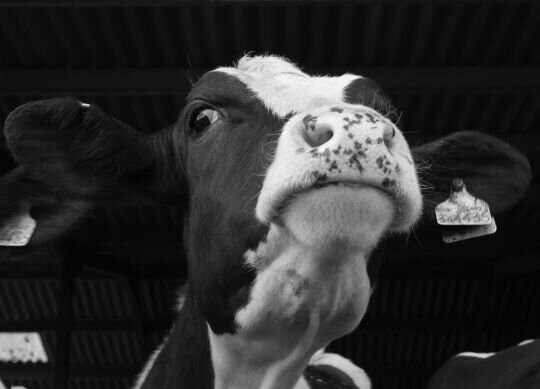Feeding Strategies with Lower Milk Prices
Because feed costs can represent 50 percent of the total cost to produce milk, dairy farmers are trying to reduce feed costs. However, with the wrong feed choices, farmers could save 10 cents a day while losing 50 cents of income. Several “Golden Rules” are listed below; do not break these rules.
- Golden Rule 1: Never give up milk. One pound of additional dry matter can lead to a 2-pound increase in milk production. One pound of dry matter can cost 12 cents while two pounds of milk can be valued at 30 to 38 cents more income, for a profit margin of 18 cents or more per cow per day.
- Golden Rule 2: Build your milk check through higher milk components (20 to 40 cents more per cwt), lower somatic cell counts (30 cents per cwt), and lower bacteria counts (40 to 60 cents per day).
- Golden Rule 3: Make feed decisions with an eye to long term consequences. Be careful if you make feeding changes that you do not jeopardize your future cow health or performance to save 30 cents per cow per day today. Examples are listed below.
- Delay in breeding cows can lead to over 120 days open. Each additional day open can cost 0.2 pounds of milk per day as cows do not calve on time.
- Reducing hoof trimming can lead to more lame cows resulting in more culling, less feed intake, and lower fertility.
- Removing feed additives can save 6 to 20 cents per cow per day, but the economics of recommended and effective feed additives are profitable at $24 or $15.
- Yeast product stabilizes the rumen environment, controls rumen pH, and lowers lactic acid levels, and has a 5:1 benefit to cost ratio.
- Mycotoxin binders/flow agents reduce the risk of immune impairment, improve rumen health, and increase dry matter intake. ONLY IF NEEDED
- Slowing heifer growth (less forage, concentrate and/or minerals) results in heifers calving at 26 months of age instead of 23 to 24 months of age. For each additional day increase in age, heifers consume more than $2 in feed costs and lower lifetime milk production.
- Golden Rule 4: Monitor cow response when making feed changes. Cows are always “talking” to you; are you listening? Watch for:
- An increase of milk urea nitrogen (MUN) from an optimal level of 8 to 12 mg/dl.
- A change in management level milk or 150 day milk by more than 2 pounds.
- A change in dry matter intake of more than 2 pounds per cow per day.
- A shift in milk fat or milk protein concentration by 0.1 percentage point.
- Golden Rule 5: Dry matter intake is key. Lower quality forage, removal of by-product feeds, or less protein supplement may cause a decline in dry matter intake. This leads to a slowing of rumen fermentation; decreased microbial amino acid synthesis; and decreased energy intake, which in turn impacts milk yield, leads to weight loss, and can reduce fertility. Fresh cows suffer the most.
These golden rules can be expanded and customized by dairy farmers, consultants, and veterinarians. Will your herd and cows be ready to respond to this opportunity? Will somatic cell count be optimal? Will cows be pregnant? Will lower peak milk production lead to lower production six months from now? Reviewing your golden rules and responses will help you make profitable decisions.



